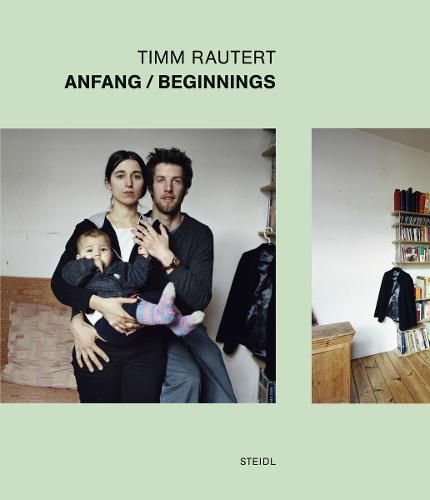Readings Newsletter
Become a Readings Member to make your shopping experience even easier.
Sign in or sign up for free!
You’re not far away from qualifying for FREE standard shipping within Australia
You’ve qualified for FREE standard shipping within Australia
The cart is loading…






In 2007 Timm Rautert, then professor of photography at Leipzig’s Academy of Fine Arts, began photographing his students with their partners and young children among the designer furniture, second-hand treasures and kids’ toys of their apartments. So began a decade-long documentary experiment that shows German families in their revealing home environments and their beginnings as a family unit, with all its complex social connotations. The book consists of 40 triptychs, one of each family. At the center is the mother/father/child group; to the left and right the living spaces seem to fold outwards, like a winged altarpiece. Rautert thus questions the idea of the holy family today though the prism of a specific generation’s middle class. His sitters gaze towards us (the children do their best), with varying degrees of formality. Rautert’s technical approach is appropriately pared back, creating a neutral stage on which his subjects pose and helping him to seize, in his words, that selfsame moment to look at that which I perhaps did not immediately grasp. A photographer must take part, must understand; that’s the secret to a successful portrait, even if that understanding sometimes does not dawn till later. Timm Rauter
$9.00 standard shipping within Australia
FREE standard shipping within Australia for orders over $100.00
Express & International shipping calculated at checkout
In 2007 Timm Rautert, then professor of photography at Leipzig’s Academy of Fine Arts, began photographing his students with their partners and young children among the designer furniture, second-hand treasures and kids’ toys of their apartments. So began a decade-long documentary experiment that shows German families in their revealing home environments and their beginnings as a family unit, with all its complex social connotations. The book consists of 40 triptychs, one of each family. At the center is the mother/father/child group; to the left and right the living spaces seem to fold outwards, like a winged altarpiece. Rautert thus questions the idea of the holy family today though the prism of a specific generation’s middle class. His sitters gaze towards us (the children do their best), with varying degrees of formality. Rautert’s technical approach is appropriately pared back, creating a neutral stage on which his subjects pose and helping him to seize, in his words, that selfsame moment to look at that which I perhaps did not immediately grasp. A photographer must take part, must understand; that’s the secret to a successful portrait, even if that understanding sometimes does not dawn till later. Timm Rauter